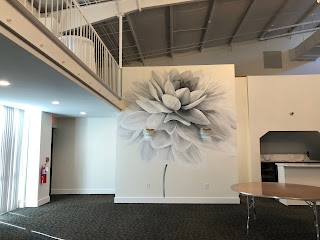“Creativity is magic. Don’t examine it too closely.” – Edward Albee
- Condition of the Wall - What kind of preparation will the surface require to be paint-ready? How much time will it take to achieve? If it is an exterior wall, will power washing, crack repair, etc. be handled by the client in advance?
- Working Conditions - Is this a rush job with a tight deadline? Will I be climbing up and down ladders and scaffolding or driving a motorized lift? Will I be working at night, outside in difficult weather conditions, in a crowded area with numerous distractions? Will there be a crowd watching my every move? If so, then I am providing a form of performance art which requires an additional fee.
- Location - How far will I have to travel each day? Will I have to arrange for lodging?
- Materials Cost - Is this mural expected to last for centuries or just a few years? Is it outside? I have to consider these factors when choosing the quality and related cost of my paints and protective finishes. Do I already have the necessary supplies on hand, or will I need to purchase additional materials?
- Equipment Cost - Will scaffolding, ladders, lights and other specialized equipment be required? Will I have to supply them or will my client?
- Design Work and Sketches - Time spent on sketches, design, revisions, and meetings are included in my mural quote at a lesser hourly rate.
- Level of Experience - My years of experience, body of work, references, unique ideas, and reliability figure into my hourly rate.
- Time-Lapse Videos of Work and Promotion - I often provide time-lapse videos and limited promotion of my work on social media, tagging the client if they agree. There is an additional value for these services though I usually provide them at no additional charge.
If you enjoyed this post, considering checking out my book, Approaching the Blank Canvas, Real Talk on Fear, Inspiration and Not Giving Up in Art and Life. It’s full of true tales and tips from my 20+ years of making art for a living. It’s available on Amazon Books and you can also find the link to it and my other books on my DesignsbyArianne website.



